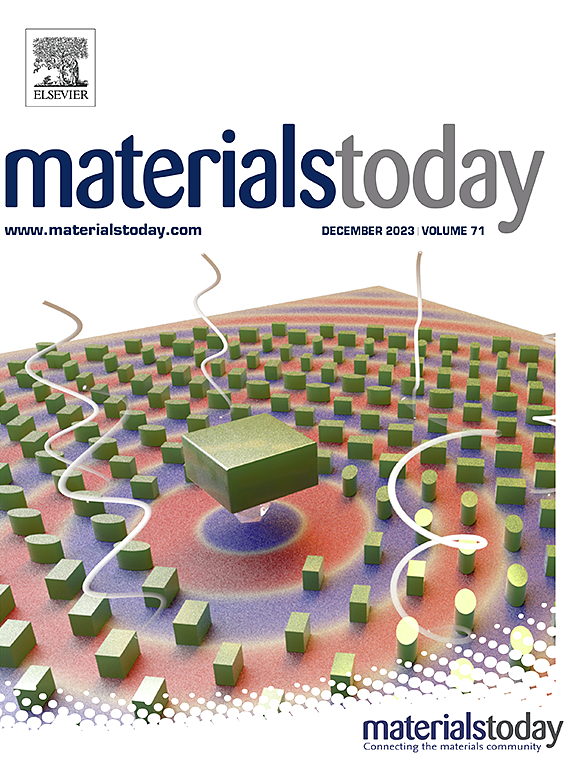Monolithically stacked VIA-free liquid metal circuit for stretchable electronics
IF 21.1
1区 材料科学
Q1 MATERIALS SCIENCE, MULTIDISCIPLINARY
引用次数: 0
Abstract
Researchers are eagerly developing stretchable conductors because they constitute basic building blocks for stretchable electronic devices in the fields of wearable electronics, soft robotics, and human–machine interfaces. Though various stretchable conductors with high stability are being devised, fabricating stretchable stacked circuits with them leads to new challenges. The most critical problem is evoked by vertical interconnection access (VIA) structures, which inevitably become stress-concentrated areas when stretched. Consequently, stretchable circuits become much more unstable when manufactured as stacked circuits than single-layered circuits. Here, we demonstrate a monolithically stacked VIA-free stretchable liquid metal circuit that is mechanically one-body-merged and electrically stacked-circuit-designed. The circuit has no vertical structures, which endows extreme electromechanical stability with various features. It is realized by unique combinations of liquid metal conductor and selective surface treatment. The stacked circuit can be elongated over 1,100 % strain, demonstrating negligible difference in stretchability compared to a single-layered circuit. The circuit also possesses various distinctive characteristics of security, choosability, and extendability. As proof, we demonstrate an encryption element, a choosable circuit, an extendable circuit, and other functional circuits. We expect the proposed stacked circuit to give directions to stretchable stacked electronics with various functionalities.

用于可拉伸电子器件的单片堆叠无过孔液态金属电路
研究人员正在热切地开发可拉伸导体,因为它们构成了可伸缩电子设备在可穿戴电子、软机器人和人机界面领域的基本组成部分。虽然人们正在设计各种高稳定性的可拉伸导体,但用它们制造可拉伸堆叠电路却带来了新的挑战。最关键的问题是垂直互连通道(VIA)结构,当拉伸时不可避免地成为应力集中区域。因此,当制造成堆叠电路时,可拉伸电路变得比单层电路更不稳定。在这里,我们展示了一个单片堆叠无过孔可拉伸液态金属电路,它是机械一体合并和电气堆叠电路设计的。电路没有垂直结构,这赋予了极高的机电稳定性和各种特性。它是通过液态金属导体和选择性表面处理的独特组合来实现的。堆叠电路可以在1100%的应变下拉长,与单层电路相比,拉伸性的差异可以忽略不计。该电路还具有安全性、可选择性和可扩展性等特点。为了证明这一点,我们演示了一个加密元件、一个可选电路、一个可扩展电路和其他功能电路。我们期望所提出的堆叠电路为具有各种功能的可拉伸堆叠电子器件提供方向。
本文章由计算机程序翻译,如有差异,请以英文原文为准。
求助全文
约1分钟内获得全文
求助全文
来源期刊

Materials Today
工程技术-材料科学:综合
CiteScore
36.30
自引率
1.20%
发文量
237
审稿时长
23 days
期刊介绍:
Materials Today is the leading journal in the Materials Today family, focusing on the latest and most impactful work in the materials science community. With a reputation for excellence in news and reviews, the journal has now expanded its coverage to include original research and aims to be at the forefront of the field.
We welcome comprehensive articles, short communications, and review articles from established leaders in the rapidly evolving fields of materials science and related disciplines. We strive to provide authors with rigorous peer review, fast publication, and maximum exposure for their work. While we only accept the most significant manuscripts, our speedy evaluation process ensures that there are no unnecessary publication delays.
 求助内容:
求助内容: 应助结果提醒方式:
应助结果提醒方式:


